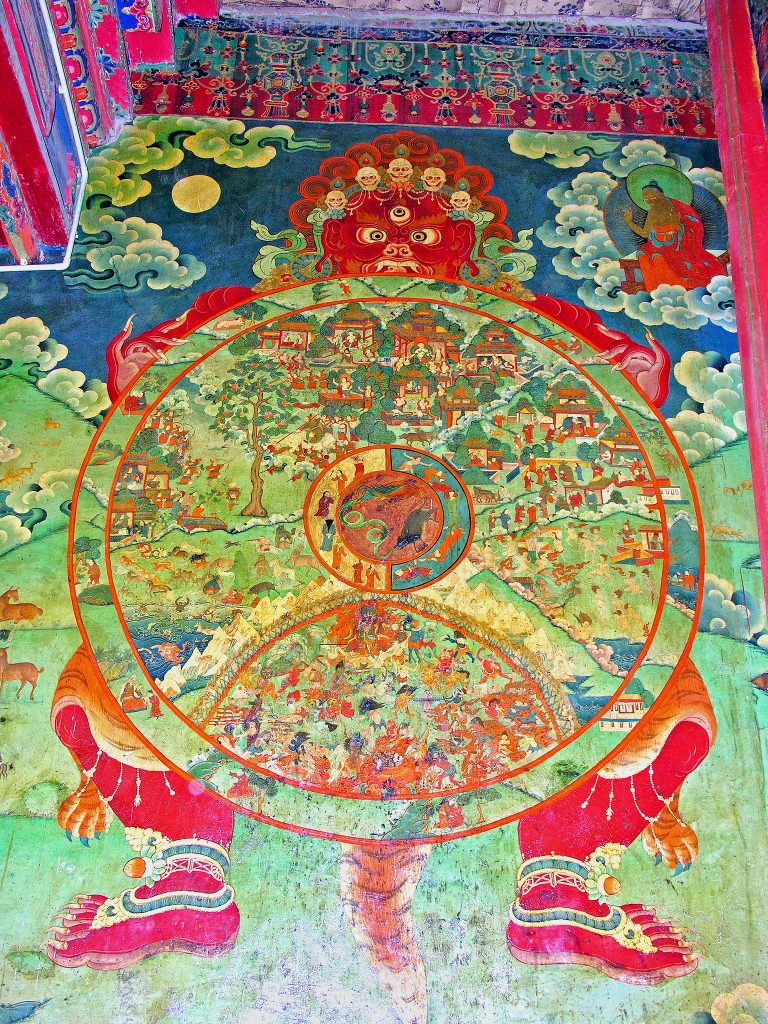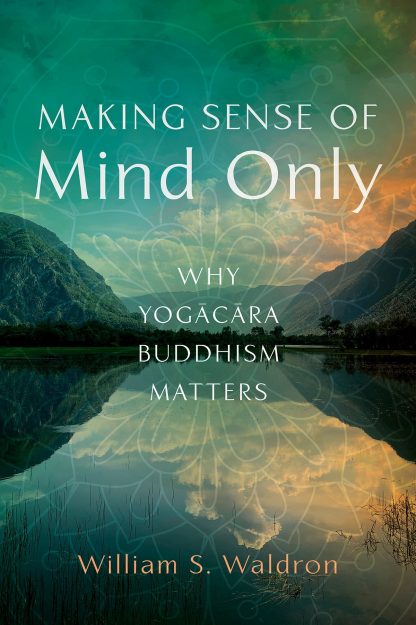What Is Dependent Arising?
A new book explores Buddhism’s foundational teachings and later developments in the Yogacara school The post What Is Dependent Arising? appeared first on Tricycle: The Buddhist Review.

A new book explores Buddhism’s foundational teachings and later developments in the Yogacara school
By William S. Waldron Feb 26, 2024 "Wheel of Life" Mandala, Tibet | Flickr/Dennis Jarvis https://flic.kr/p/53ztX7
"Wheel of Life" Mandala, Tibet | Flickr/Dennis Jarvis https://flic.kr/p/53ztX7The formula of dependent arising depicts both the long-term process of rebirth and the short-term cognitive processes that perpetuate it—the two are closely intertwined. Although we find many variations in the early texts, the series with twelve limbs soon became standard. This is the version illustrated in the wheel of becoming (bhavacakra) on monastic walls throughout Buddhist Asia.
In the Sayings on Causes (Nidanavagga), the second major division of his Connected Discourses, the Buddha presents this traditional series, describing the arising of our world of suffering, of duhkha, which, when reversed, leads to its cessation. It is an analysis of the human problem as well as the path to its solution.
And what, monks, is dependent arising? With ignorance as condition, karmic formations [come to be]; with karmic formations as condition, consciousness; with consciousness as condition, name-and-form; with name-and-form as condition, the six sense spheres; with the six sense spheres as condition, contact; with contact as condition, feeling; with feeling as condition, craving; with craving as condition, grasping; with grasping as condition, becoming; with becoming as condition, birth; with birth as condition, aging and death, sorrow, lamentation, pain, displeasure, and despair come to be. Such is the origin of this whole mass of suffering. This, monks, is called dependent arising. –SN 12.1
The presentations of dependent arising all emphasize that our phenomenal world, our world of dissatisfactory experience, is brought about not by any single cause but by the interaction among multiple factors occurring in discernable patterns. Early on the twelve limbs were organized into three categories, the same categories introduced above in the thought exercise around habit formation: (1) karmic action, (2) their results, and (3) the afflictive reactions these results typically elicit. This pattern occurs in both our moment-to-moment activities and, according to somewhat later interpretations, over the course of three separate lifetimes. […]
In the early Buddhist view, we are not born blank slates. We come into life with various dispositions, tendencies, and the potential to experience the results of actions accumulated over countless past lives. These influence the development of our mind and body. When objects impinge upon our sense faculties and fresh moments of cognitive awareness arise—that is, contact—the resulting sensations elicit craving and grasping, afflicted responses that fuel further actions. This entire process repeats itself over and over, building up and reinforcing our habitual tendencies, which over time become entrenched structures in much the same way that the repeated practice of sports, music, or meditation become etched into our muscle memory and neural networks. These are all samskaras, karmic formations formed by the formative processes of actions, results, and reactions. Together these cycles constitute a constructive feedback process whereby the results of previous actions become the basis for succeeding ones.
And of course, we identify with all these: “I am my body, my thoughts, feelings, and sensations, my memories and plans, my special likes and dislikes,” and so on. From this perspective, our identities, our sense of self, are just habits built up over time through the thoughts, feelings, and actions that occur over and over. Indeed, our sense of self is the most entrenched and pernicious habit of all.
It is liberating, Buddhists say, to see ourselves—our emotional, psychological, and physical lives—as processes in dynamic interaction with our environments. Analyzing our experiences in these terms, in terms of dependent arising, allows us to eventually see things as they are and become less attached to the thoughts, feelings, and things we identify with and grasp onto. The Buddha’s disciple Ajnata Kaundinya was said to have attained the “stainless vision of the Dharma” on hearing that “Whatever is subject to origination is all subject to cessation.”
♦

Excerpted from Making Sense of Mind Only: Why Yogacara Buddhism Matters by William S Waldron and reprinted with permission from Wisdom Publications, New York, 2024.
![]()
Thank you for subscribing to Tricycle! As a nonprofit, we depend on readers like you to keep Buddhist teachings and practices widely available.
This article is only for Subscribers!
Subscribe now to read this article and get immediate access to everything else.
Already a subscriber? Log in.

 ShanonG
ShanonG 





























